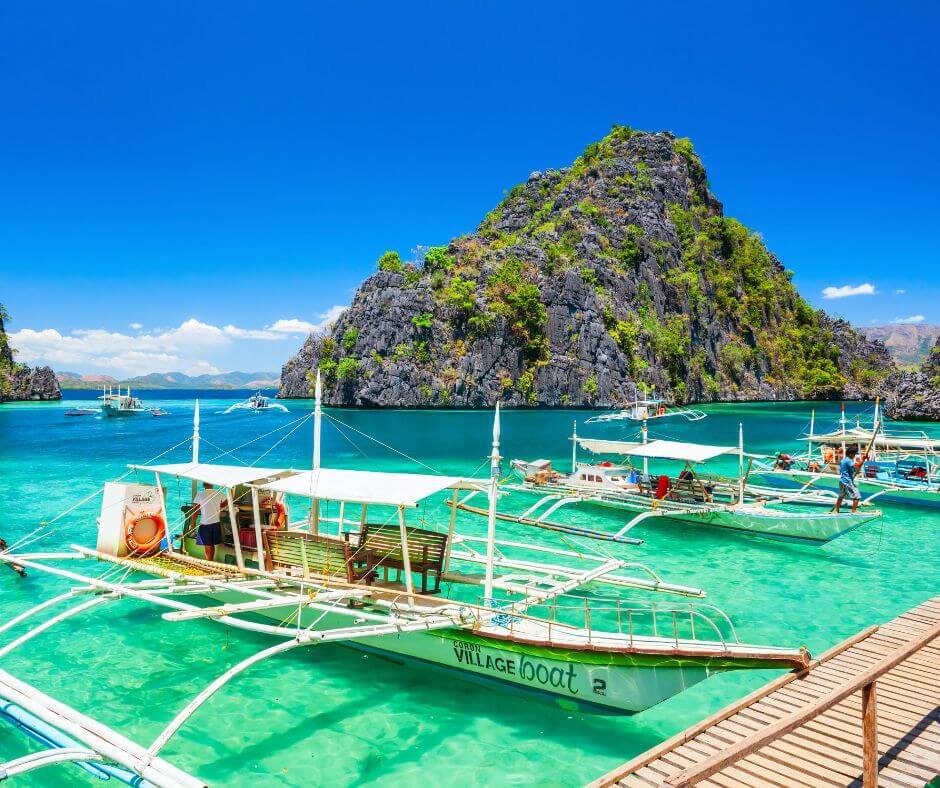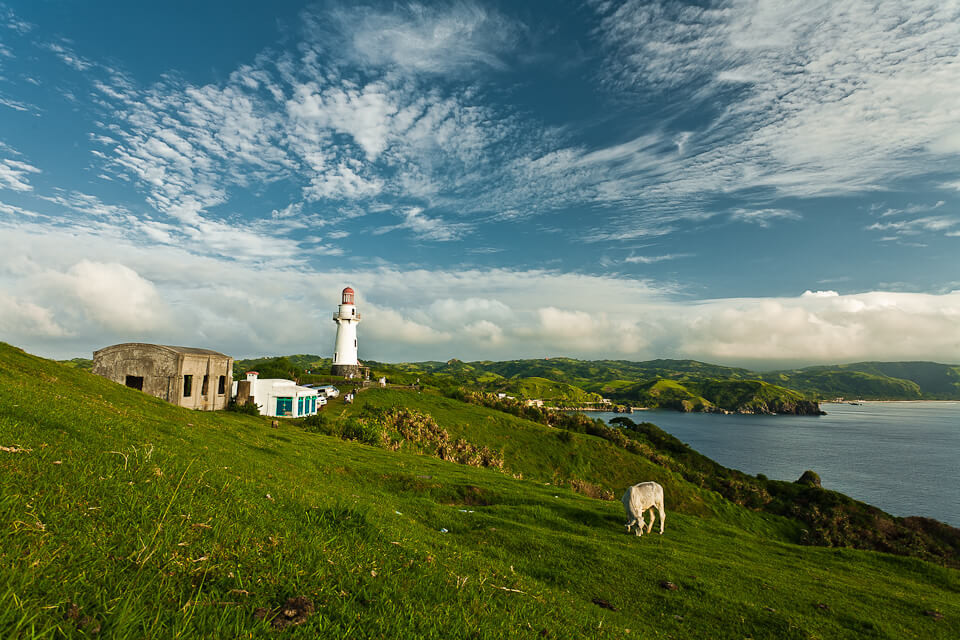- Finding Utopia Newsletter
- Posts
- Basco, Batanes – Where Windswept Beauty Meets Timeless Culture
Basco, Batanes – Where Windswept Beauty Meets Timeless Culture
Stories: Basco, Batanes – Where Windswept Beauty Meets Timeless Culture; Loboc River – Bohol’s Serene Journey Through Nature and Culture; Philippines Visa Guide – 2025 Edition

Hello and Mabuhay!
Welcome to Finding Utopia — your trusted guide to exploring the wonders of the Philippines and beyond.
In this edition, we bring you inspiring stories and essential travel insights to fuel your next adventure:
Basco, Batanes – Where Windswept Beauty Meets Timeless Culture
Loboc River – Bohol’s Serene Journey Through Nature and Culture
Philippines Visa Guide – 2025 Edition
Wherever you're dreaming of going next, we're here to guide you closer to your utopia.
Enjoy the read!
— The Finding Utopia Team
Basco Batanes – Where Windswept Beauty Meets Timeless Culture

Perched at the edge of the archipelago, Basco, Batanes offers a landscape so pristine and poetic it feels like a dream. Our latest post, Basco, Batanes, invites you to journey to the northernmost tip of the Philippines—where dramatic cliffs, rolling hills, and resilient culture create a travel experience unlike any other.
Why Basco Captivates Visitors
Basco may be small in size, but it serves as the provincial capital and cultural heart of Batanes. Just three inhabited islands—Batan, Sabtang, and Itbayat—paint this remote corner with rolling green hills, stone houses, and a sense of serene isolation that contrasts sharply with bustling city life.
Must-See Landmarks Around Basco
Vayang Rolling Hills: A sweeping emerald landscape where hikers are treated to endless grassy ridges and ocean views.
Naidi Hills & Basco Lighthouse: A short 1.2-km hike leads to the lighthouse overlooking sweeping panoramas of Batan Island and distant seas.
Dipnaysupuan (Japanese) Tunnel: A relic of WWII, this tunnel offers historical insight into Batanes’ wartime struggles.
Santo Domingo Cathedral (Basco Cathedral): Built in 1812 and rebuilt after the 2000 quake, this stone sanctuary blends colonial charm with Ivatan resilience.
Ivatan Culture & Climate Wisdom
The indigenous Ivatan people are known for crafting sturdy stone houses, designed to withstand powerful typhoons. Their traditional headgear, the vakul, is woven from vuyavuy palm fiber—functional artistry shaped by nature. Rooted in Austronesian heritage, the Ivatan share deep cultural and genetic links with island communities in Taiwan.
They’ve long practiced intuitive weather-reading: when livestock huddle or birds take shelter, storms aren’t far behind. Simple yet profound, these traditions keep communities safe in volatile climates
Planning Your Basco Visit
Getting There: Fly via Philippine Airlines from Manila directly into Batanes. Boats connect to Sabtang and Itbayat from Batan Island
When to Go: Visit during the dry season (February to May) for clearer skies, gentler seas, and golden vistas. Flight reliability improves, though this is peak travel season.
Travel Tips: Few ATMs are available in Basco, so bring ample cash in pesos. Cell service is patchy—embrace the peaceful disconnection.
Why Basco Will Steal Your Heart
Basco stands as both a frontier and a sanctuary—a place where nature’s majesty and cultural endurance blend seamlessly. Whether you’re chasing wind-bent hills, exploring WWII relics, or connecting with Ivatan spirit and architecture, Basco invites deep reflection and awe.
Embrace the winds, the views, and a quieter way of being.
Discover the full guide and plot your northernmost adventure:
Loboc River – Bohol’s Serene Journey Through Nature and Culture

In the heart of Bohol, the Loboc River winds gracefully through lush tropical landscapes, offering travelers an experience that blends relaxation, cultural immersion, and natural beauty. Our latest feature, Loboc River – Bohol’s Serene Journey Through Nature and Culture, takes you along one of the Philippines’ most enchanting waterways.
A River with a Story
More than just a scenic spot, the Loboc River has long been a lifeline for the communities along its banks. Its calm, emerald waters reflect not only the surrounding greenery but also centuries of history. Loboc is one of the oldest towns in Bohol, and the river has been central to local life—serving as a trade route, a source of livelihood, and now, a thriving eco-tourism attraction.
The Famous River Cruise
The most popular way to experience Loboc is by joining a river cruise. These floating restaurants glide gently downstream, treating guests to a buffet of Filipino dishes while a live band plays classic OPM (Original Pilipino Music). Along the way, you’ll see nipa palms, dense mangroves, and locals paddling small boats.
One of the highlights of the cruise is a stop at a floating platform, where local performers—often dressed in traditional attire—sing and dance folk songs, showcasing Boholano hospitality and heritage. It’s a cultural encounter that feels both intimate and celebratory.
Beyond the Cruise
If you’re looking for more adventure, Loboc offers kayaking, stand-up paddleboarding, and small motorized banca rides for a closer look at its tributaries. In the evening, the river transforms into a magical spectacle during firefly watching tours, where thousands of glowing insects light up the mangroves like a living constellation.
Practical Tips for Visitors
Best Time to Visit: November to May offers clear skies and calmer waters, perfect for river activities.
Getting There: Loboc is about a 40-minute drive from Tagbilaran City or an hour from Panglao Island. Local vans, buses, or private transfers are available.
What to Bring: Light clothing, a hat, insect repellent, and a camera for capturing the stunning scenery.
Booking Tip: Reserve your river cruise in advance during peak seasons to secure a good seat.
A Journey Worth Taking
What makes the Loboc River truly special is the harmony between nature and community. While the scenery is breathtaking—emerald waters framed by towering palms—it’s the warmth of the people, the music, and the slow, unhurried pace that leaves a lasting impression.
Whether you’re enjoying a leisurely lunch aboard a floating restaurant, paddling quietly in a kayak, or drifting under a canopy of fireflies, the Loboc River invites you to slow down, breathe deeply, and appreciate life’s simple pleasures.
Experience the full charm of Loboc in our complete guide:
Philippines Visa Guide – 2025 Edition

Planning your Philippine escape in 2025? Whether you're chasing sun-drenched shores, rich heritage, or new adventures, our updated Philippines Visa Guide (2025 Edition) covers all you need to know about entry rules, new programs, and smooth travel planning.
Visa-Free Travel & Special Entry Policies
Most travelers qualify for visa-free entry for up to 30 days, provided they hold a passport valid for at least six months and return or onward ticket.
Indian passport holders gained visa-free access starting June 8, 2025, allowing short tourism stays up to 14 days—a big step to boost tourism from India.
Even better: travelers with valid visas or residence permits from the U.S., Canada, Australia, Schengen nations, Singapore, or the U.K. may also visit visa-free for up to 30 days.
What You’ll Need—Checklist for Visa-Free Visitors
Passport: Valid for at least 6 months from entry date
Return/Onward Ticket: Required under visa-free policy
Proof of Funds: Bank statements, employment letters, or sponsor guarantee
Proof of Stay or Ties: Hotel reservations, employment ID, property docs
New Entrant: Digital Nomad Visa (Coming Soon!)
The Philippines is also introducing a Digital Nomad Visa, authorized under Executive Order No. 86 (signed April 28, 2025). It allows remote workers (age 18+) to stay up to one year, renewable, provided they have:
Proof of remote work
Sufficient foreign-sourced income
Valid health insurance
No criminal record
Not employed by a Philippine entity or a security risk
This is still in development, so keep an eye out for official announcements on application timing!
Tips for a Smooth Visit
Decision Tree: Check if your country is visa-exempt or requires a visa—consult the embassy or official DFA listings.
Apply Early: For visa-required destinations, submit your documents, itinerary, and passport with ample time.
Monitor Updates: Travel policies can shift—watch for announcements about digital nomad visas or other pathways.
Insurance & Funds: Even for visa-free stays, always travel with insurance and proof of financial means for peace of mind.
Why This Matters
With the expanding visa-free access—and soon, a nomad-friendly entry option—the Philippines is making it easier than ever to explore its islands, mountain retreats, marine sanctuaries, and vibrant cities. This 2025 guide equips you to prepare with confidence, avoid delays, and make your trip truly stress-free.
Explore the full guide and prepare your Philippine journey today:

Looking for unbiased, fact-based news? Join 1440 today.
Join over 4 million Americans who start their day with 1440 – your daily digest for unbiased, fact-centric news. From politics to sports, we cover it all by analyzing over 100 sources. Our concise, 5-minute read lands in your inbox each morning at no cost. Experience news without the noise; let 1440 help you make up your own mind. Sign up now and invite your friends and family to be part of the informed.





Reply